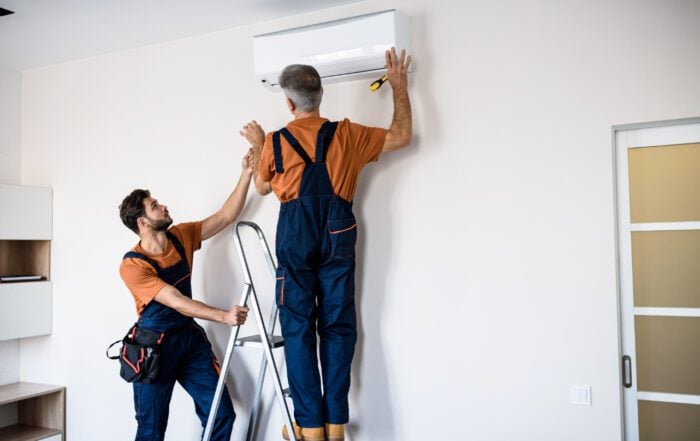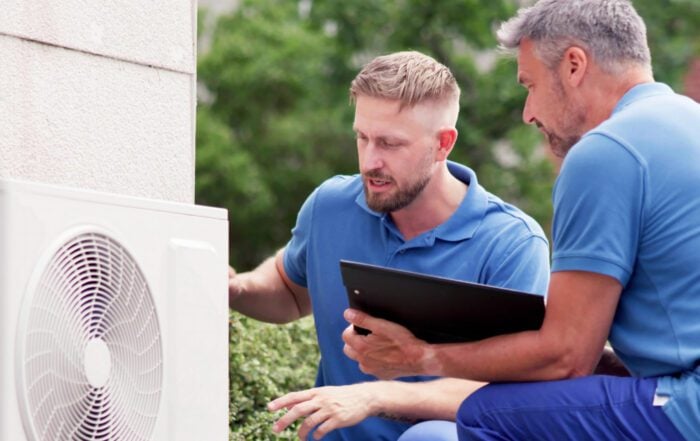You’re driving along Route 90 on your way to a meeting, and your check engine light flashes on your dashboard. Experience tells you this warning is significant, and you should take your vehicle to your mechanic for an inspection.
Now imagine for a moment that your car or truck did not have check lights to alert you of problems which need your attention. Your vehicle would display signs of the issue such as difficulty starting, a squeaky belt, or even smoke from under the hood eventually.
Your furnace is just like a vehicle without check lights.
It will give you signs when issues begin to occur, but unless you know what to listen or look for, you probably won’t know until it’s too late. A general maintenance program is a great way to resolve issues before they happen – and Stack has a great program available.
Autumn is almost here, and there are plenty of reasons to have a local dealer like Stack run a check of your system before the Cleveland winter rears its ugly head.
WHAT SHOULD BE COVERED DURING A FALL MAINTENANCE INSPECTION?
A professional contractor will include a wide variety of checks on your furnace during the fall maintenance inspection. Every company has a different set of tests they cover as there is not an industry standard list, but here are a few of them and why they’re performed:
WHILE THE SYSTEM IS OFF:
Inspect & clean blower assembly
Dust and dirt can build up in the crevices of the unit and cause fuel waste and lowered efficiency, driving up your energy consumption and cost. Your technician will vacuum out the debris to allow your system to breathe easier.
Inspect gas leaks for gas furnaces
If your gas furnace develops a leak, low levels of carbon monoxide will seep into your home, putting your and your family at risk. A CO detector will alert you to the danger so you can get out safely, but there’s no reason to expose your family to the poisonous fumes when a simple fall maintenance inspection takes care of it.
Inspect the ignition system and its safety controls
A faulty ignition system can cause problems such as no heat – a major issue for those trying to survive a Midwestern winter. The technician will make sure the ignition system is up to par, so you stay nice and warm in the freezing temperatures.
Inspect heat exchanger
There are a variety of problems that can occur with a heat exchanger such as leakage, increase in energy consumption, and fouling (when organisms begin to grow on heat transfer surfaces). An inspection will alert your contractor to any problems that need to be addressed.
Inspect flue system
As the part of your system which vents the byproducts of your heating system, it’s imperative that it’s free and clear of any blockage. If it retains too much buildup, elements such as carbon monoxide can become trapped in your home. The flue components can also break down over time as they are continually exposed to intense levels of heat. A professional can remove blockage as well as determine if parts should be replaced.
Clean or replace air filters
As we’ve mentioned before, a clean air filter is critical to an HVAC system’s efficiency. It can be the difference between an efficient system and one that drives up your energy consumption – between clean air and breathing recycled allergens. Special, high-rated HEPA filters need to be properly cleaned before being reused while standard filters just need to be replaced every few months – and during your maintenance tune-up is a perfect time to do it.
Inspect ductwork for leaks
If you’ve noticed an increase in your energy bills even though you’ve done nothing different with your heat or cooling settings, you may just have leaks in your ductwork. These leaks can empty into areas of your home you’re not trying to condition, forcing the system to generate more conditioned air to reach its intended destination.
WHILE THE SYSTEM IS ON:
Monitor startup
Once you cover all the bases with the system shut off, the technician should then monitor the system during startup. He or she will be able to spot any anomalies in the system as it begins to heat up.
Listen for any abnormalities – noise or odors
A sure way to tell if something is wrong with your system is with noises or odors emitting from it which you don’t ordinarily hear or smell. A trained technician will often be able to diagnose any problems based on certain sounds and smells.
Monitor for correct refrigerant charges
If coolant needs to be replenished, it means your air conditioner has a leak somewhere. When a technician checks for a refrigerant charge, he or she will also check for leaks in the unit.
Air conditioner charging should not be completed during cooler weather, so it’s important to have this done before winter.
Measure Dry & Wet Bulb temperatures, both inside & outside
Dry Bulb temperature is simply air temperature; wet bulb – or adiabatic saturation temperature – is situated between Dry Bulb and the Dew Point and tells you how quickly water can evaporate.
These temperatures are essential to the efficiency of your cooling system. The A/C unit is adjusted to accommodate the temperatures, so your system runs at its highest efficiency. A technician will check this to see if the settings need to change or not.
Check temperature rise
If your furnace is unable to generate enough airflow to distribute the heat it has created, it will overheat. This could be caused by any number of things such as undersized ductwork, a dirty furnace filter, too many blocked-off vents, etc.
An HVAC contractor will be able to check and diagnose the temperature rise.
Check vent systems
Temperature rise may not be the only link to poor airflow.
If you’ve noticed certain areas of your home cooling or heating more than they should, that can also indicate an airflow issue. You can usually check air flow yourself, but when a contractor checks it, he or she can tell you what is causing the problem and how it should be addressed. Sometimes it’s a leaky duct, other times it’s an issue with the air conditioner or furnace itself.
Monitor system for manufacturer’s specs
Manufacturers have specifications set on their equipment for a reason: that’s how it best operates. Manufacturing companies spend years testing, adjusting, and retesting their products, so they work as efficiently as possible. Improperly installed equipment will not meet those specs and can cost you money or shorten the lifespan of your equipment. Professional technicians are specifically trained to work on this equipment and can tell when specifications need to be adjusted.
Offer recommended repairs and replacements as needed
Not every maintenance visit will result in having to repair or replace parts of your HVAC system, but there is always a possibility. These checks are designed to catch and fix small problems before they become big ones. Your technician will finish his inspection by explaining any issues with your system and suggesting repairs.
There is no better time to do your annual maintenance check than this autumn.
With an inspection now, you’ll roll into those frigid months fully prepared and assured that your heating system will run at maximum efficiency to keep you comfortable during the winter’s worst.
To have a Stack professional inspect your system this fall season, contact us now.
Have Any Questions?
If this is an emergency please call 440-937-9134.
Otherwise, please feel free to call us or submit this form to schedule an appointment for service or request an estimate. We will contact you shortly!



